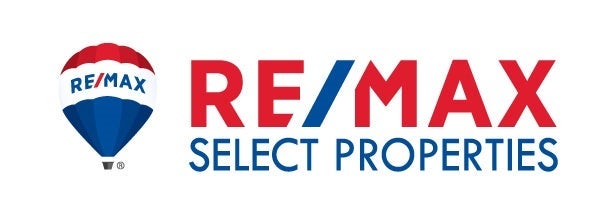
Maybe you've been feeling the need for more space, less space, or just different space. You've been wondering - which solution will give me what I want with the least financial hit? Here's one gauge to use: Expect moving to cost about 10 percent of your home's current value. If your remodel project can be done for less than that, stay and do it! But plan it with an eye on the potential resale value. Read on for ideas and tips that will help you take the lead in plotting your home remodel.
WHAT TO REMODEL
When you're ready to nail down your plans (so to speak), here are suggestions from industry experts:
Kitchen
Add usability with dual sinks and cooking stations. Add aesthetics with commercial-quality, stainless steel appliances, stone of stainless steel countertops and ceramic tile back splashes. Add space with breakfast nook or walk-in pantry. Add livability with computer desk, mudroom, or hobby area.
Bathroom
Add light with skylights and glass blocks without losing privacy. Add space with walk-in dual shower, vaulted ceiling, recessed medicine cabinet, or a curved shower curtain rod. Add functionality with twin sinks or vanities. Add aesthetics with ceramic tile or stone flooring, stone countertops, heated towel bars and floors.
Siding
Remodeling the exterior is as much about maintenance as it is about curb appeal. Vinyl siding looks fresh and tidy year after year with minimal upkeep. With stucco siding, a new polymer covering can be sprayed or troweled onto a fiberglass mesh base.
Windows
New windows will help you realize additional savings in monthly utility bills. Prospective buyers view windows as they do other structural items, so failing to update old ones may affect potential offers. Newer styles include seamless bent-glass corner windows, curved glass and casements with no center stile.
In addition to making it more livable, remodeling can also make your home more valuable. According to the Appraisal Institute of Canada, your remodel investment dollars pay back at different rates when you sell your home, depending on the type of project you choose. Using these sample job costs, here is the estimated return on various remodeling projects:
Minor Kitchen Remodel
Job Cost: $3,000
Expected Return: $2,300-$3,000
Average Payback: 75%-100%
Major Kitchen Remodel
Job Cost: $25,000
Expected Return: $18,800-$25,000
Average Payback: 75%-100%
Bathroom Remodel
Job Cost: $8,500
Expected Return: $6,400-$8,500
Average Payback: 75%-100%
Basement Remodel
Job Cost: $7,000
Expected Return: $3,500-$5,300
Average Payback: 50%-75%
Fireplace Addition
Job Cost: $3,000
Expected Return: $1,500-$2,300
Average Payback: 50%-75%
Deck Addition
Job Cost: $6,000
Expected Return: $3,000-$4,500
Average Payback: 50%-75%
Heating System Replacement
Job Cost: $4,000
Expected Return: $2,000-$3,200
Average Payback: 50%-80%
Window Replacement
Job Cost: $6,000
Expected Return: $3,000-$4,500
Average Payback: 50%-75%
Major Landscaping
Job Cost: $10,000
Expected Return: $2,500-$5,000
Average Payback: 25%-50%
WHY REMODEL?
Ideally in resale you'll be able to regain the money you put into a remodel. With some projects, you may recoup more than you spend! Remember that payoff also depends on the:
- Condition of the house overall
- Value of similar houses in the neighborhood
- Availability of new homes in the area
- Rate at which property values are changing
- Location, location, location
MASTERING THE BUDGET FOR YOUR HOME REMODEL
If you're thinking about remodeling your house, your first task will be to create a realistic budget. But that involves some careful pre-planning. Go through the guidelines here, then use the worksheet to create your remodel budget.
CALCULATING YOUR REMODEL BUDGET
Construction Labour : $___________
Including subcontractors. Multiply wages by estimated hours for each worker. Remember payroll taxes and workers' compensation insurance if you do the hiring.
Contractor Fees : $___________
Fees charged by contractors and subcontractors, such as electricians.
Construction Materials : $___________
Lumber, nails, paint, wallpaper, insulation, flooring, tiles, plumbing fixtures, cabinets, countertops, heating & ventilation.
Tools & Equipment : $___________
All tools purchased and rented for the project, from hammers to post-hole diggers. Also includes safety equipment such as goggles, hard hats, ear mufflers, etc.
Permit Fees : $___________
Contact the city planning department. Contractors may handle this for you.$
Decorative Add-ons : $___________
Window treatments, light fixtures, cabinet hardware, etc.
Repairs Due to Remodeling : $___________
Repairs needed resulting from the remodeling, such as patching the wall after plumbing vents are moved or replanting lawn where equipment had been kept
Cleanup : $___________
Trash bin rental, hauling fees, dumping fees, removal service
SUBTOTAL : $___________
Contingencies
Includes cost overruns as well as upgrades, changes, supply shortages, weather delays, miscommunication, etc. Budget up to 30% of subtotal$
Add contingencies to Subtotal for TOTAL : $___________
BEFORE YOU BUDGET
- Imagine the new space and make sketches. It's easier to plan something you can see.
- Explore. Talk to people who have done a similar renovation. Read books, magazines and websites, get onto renovation listservs, watch instructional videos. Take notes!
- Think ahead. Is the renovation intended to add value when you sell next year? Then pay special attention to assessing the value of the house and neighborhood. Add comfort or pleasure? Accommodate a growing or shrinking household? If you plan to stay for at least 10 years, almost any renovation will be worth its cost.
THE BUDGET PROCESS
- Figure out how much money you have to spend on a remodel without straining other budgets.
- Figure out your debt-to-income ratio. If you're planning to borrow, you need to know whether you can handle the extra debt.
If you're working with an architect, designer, or contractor:
- Bring your drawings, budget and other figures to them for help with cost breakdowns.
If you're going at it alone, the following will be your responsibility:
- Estimate project costs for materials, labour, permit fees and so on.
- Create a timeline to help contractors plan the project and help you budget efficiently
